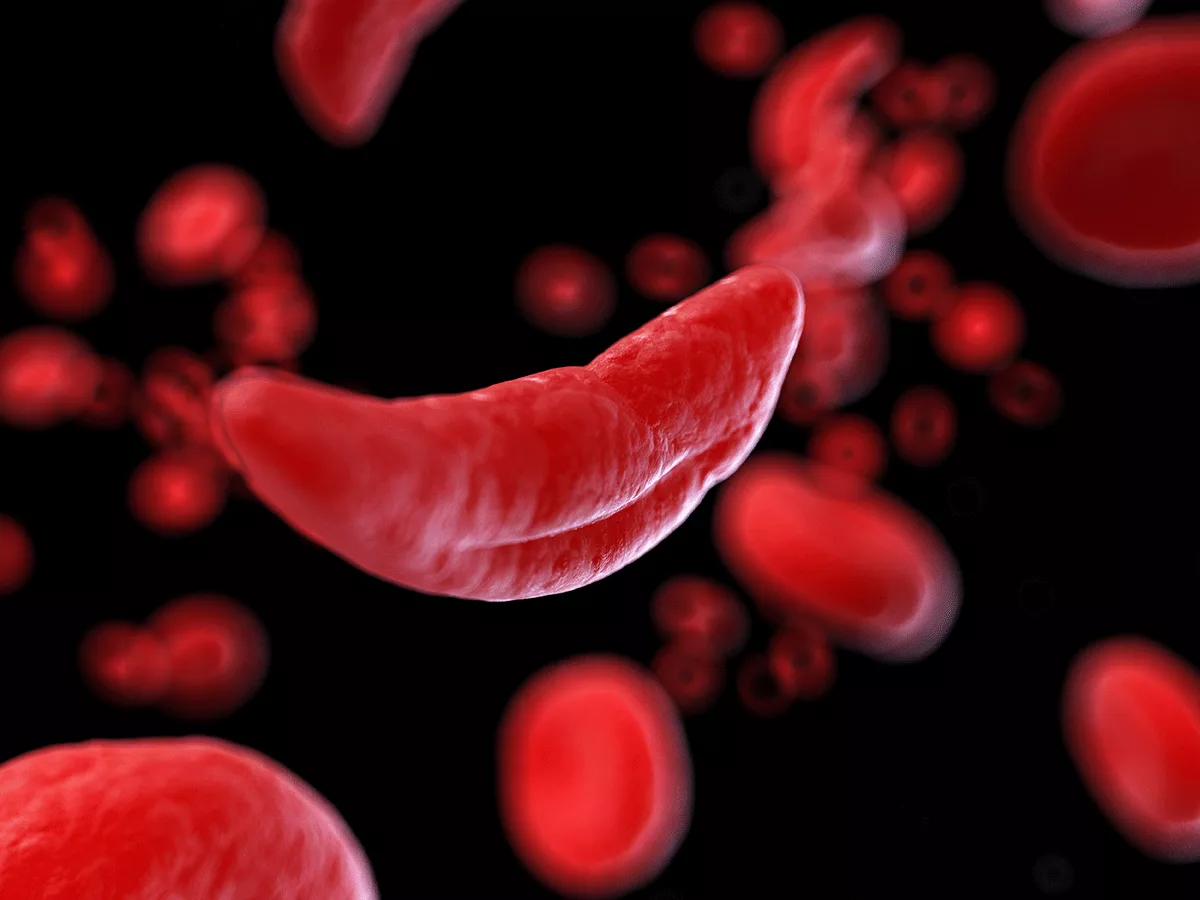
News
October 23, 2025
Multiplex base editing approach could treat sickle cell disease
Sickle cell disease (SCD) is a genetic disorder caused by a single point mutation in the β-globin gene, leading to the production of abnormal hemoglobin. Patients with SCD lacking a compatible donor for allogeneic hematopoietic stem/progenitor cell transplantation can benefit from gene therapy approaches.
**Multiplex base editing offers new hope for sickle cell disease treatment**
Sickle cell disease (SCD), a painful and debilitating inherited blood disorder, affects millions worldwide. Now, a promising new gene therapy approach using multiplex base editing is offering renewed hope for patients who lack traditional treatment options like bone marrow transplants.
SCD arises from a tiny but impactful error: a single point mutation in the β-globin gene. This faulty gene instructs the body to produce abnormal hemoglobin, the protein in red blood cells responsible for carrying oxygen. The abnormal hemoglobin causes red blood cells to become rigid and sickle-shaped, leading to chronic pain, organ damage, and a shortened lifespan.
While allogeneic hematopoietic stem/progenitor cell transplantation, often referred to as a bone marrow transplant, can be curative, it requires a matching donor. Unfortunately, many SCD patients are unable to find a suitable match, leaving them with limited treatment choices focused on managing symptoms rather than addressing the root cause of the disease.
This is where gene therapy, particularly base editing, presents a significant advancement. Base editing is a revolutionary gene-editing technique that allows scientists to precisely correct single-letter mutations in DNA without cutting the entire DNA strand. Unlike earlier gene-editing methods, base editing offers a more precise and potentially safer approach.
The "multiplex" aspect of this new approach is key. It suggests the possibility of targeting multiple genetic locations simultaneously, potentially addressing different aspects of the disease or improving the efficiency of the editing process. This could lead to more effective and durable treatment outcomes for SCD patients.
The potential benefits of this multiplex base editing approach are enormous. By correcting the underlying genetic defect, this therapy could eliminate the production of abnormal hemoglobin, allowing red blood cells to regain their normal shape and function. This, in turn, could alleviate the debilitating symptoms of SCD and improve the overall quality of life for affected individuals. While still in the early stages of development, this innovative gene therapy holds immense promise for providing a much-needed curative option for SCD patients who currently have limited alternatives. Further research and clinical trials are crucial to fully evaluate the safety and efficacy of this groundbreaking approach.
Sickle cell disease (SCD), a painful and debilitating inherited blood disorder, affects millions worldwide. Now, a promising new gene therapy approach using multiplex base editing is offering renewed hope for patients who lack traditional treatment options like bone marrow transplants.
SCD arises from a tiny but impactful error: a single point mutation in the β-globin gene. This faulty gene instructs the body to produce abnormal hemoglobin, the protein in red blood cells responsible for carrying oxygen. The abnormal hemoglobin causes red blood cells to become rigid and sickle-shaped, leading to chronic pain, organ damage, and a shortened lifespan.
While allogeneic hematopoietic stem/progenitor cell transplantation, often referred to as a bone marrow transplant, can be curative, it requires a matching donor. Unfortunately, many SCD patients are unable to find a suitable match, leaving them with limited treatment choices focused on managing symptoms rather than addressing the root cause of the disease.
This is where gene therapy, particularly base editing, presents a significant advancement. Base editing is a revolutionary gene-editing technique that allows scientists to precisely correct single-letter mutations in DNA without cutting the entire DNA strand. Unlike earlier gene-editing methods, base editing offers a more precise and potentially safer approach.
The "multiplex" aspect of this new approach is key. It suggests the possibility of targeting multiple genetic locations simultaneously, potentially addressing different aspects of the disease or improving the efficiency of the editing process. This could lead to more effective and durable treatment outcomes for SCD patients.
The potential benefits of this multiplex base editing approach are enormous. By correcting the underlying genetic defect, this therapy could eliminate the production of abnormal hemoglobin, allowing red blood cells to regain their normal shape and function. This, in turn, could alleviate the debilitating symptoms of SCD and improve the overall quality of life for affected individuals. While still in the early stages of development, this innovative gene therapy holds immense promise for providing a much-needed curative option for SCD patients who currently have limited alternatives. Further research and clinical trials are crucial to fully evaluate the safety and efficacy of this groundbreaking approach.
Category:
Technology